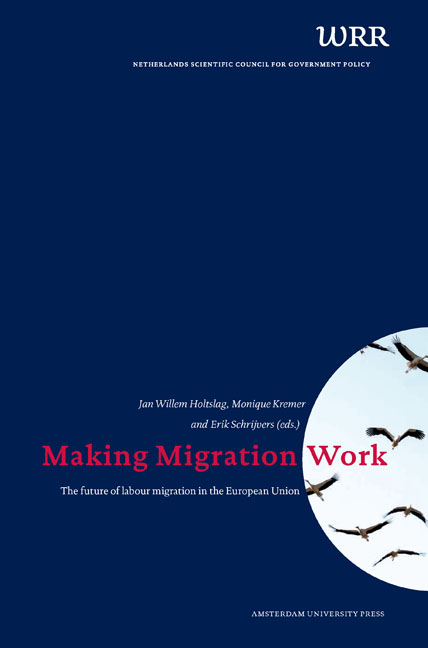Book contents
- Frontmatter
- Contents
- Introduction
- Acknowledgements
- 1 How to Make Migration Work
- 2 The Global and European Neighbourhood Migration Systems: Trends, Policy Choices, Governance Challenges and a Look Ahead
- 3 Satisfying Labour Needs in an Ageing Society
- 4 Migrant Workers: Inevitability or Policy Choice?
- 5 Intra-EU Labour Mobility after Eastern Enlargement and During the Crisis: Main Trends and Controversies
- 6 Labour Migration From Central and Eastern Europe and the Implications for Integration Policy
- About the Authors
1 - How to Make Migration Work
Published online by Cambridge University Press: 23 June 2021
- Frontmatter
- Contents
- Introduction
- Acknowledgements
- 1 How to Make Migration Work
- 2 The Global and European Neighbourhood Migration Systems: Trends, Policy Choices, Governance Challenges and a Look Ahead
- 3 Satisfying Labour Needs in an Ageing Society
- 4 Migrant Workers: Inevitability or Policy Choice?
- 5 Intra-EU Labour Mobility after Eastern Enlargement and During the Crisis: Main Trends and Controversies
- 6 Labour Migration From Central and Eastern Europe and the Implications for Integration Policy
- About the Authors
Summary
INTRODUCTION
Labour migration has become inevitable in a Europe without frontiers. In fact, one of the explicit aims of the European Union Member States is to promote the free movement of workers in addition to the free movement of commerce and goods. The underlying idea is that labour shortages in one country can be offset by unemployed workers from other countries. Besides preventing unemployment, an open European labour market also improves economic resilience and allows European regions to specialise, making the European Union more competitive as a whole.
Compared to the United States or Canada, internal mobility in the European Union (EU) is particularly low. Only 2.5 per cent of Europeans live in a EU Member State other than the one in which they were born (Eurostat 2012). The free movement of workers is also quite limited in scale compared to the EU's other ‘freedoms’. The objectives set for the EU apparently fail to acknowledge that people base a decision to move elsewhere not only on financial motives but also on language and other cultural and social obstacles (Favell 2008; Bonin et al. 2008).
When the EU welcomed ten new Central and Eastern European Member States in 2004 and 2007, however, internal mobility increased considerably in scale and its complexion also changed. That has had consequences for the Netherlands as well. Although many of the 1.5 million people who left Poland migrated to the United Kingdom, the Netherlands has an estimated 300,000 ‘new’ EU citizens from Central and Eastern Europe (Van der Heijden et al. 2011; Eurostat 2012; Regioplan 2012). The recent crisis has also led to a slight increase in migration from southern Europe (CBS 2012). On top of that, today's migrants have other reasons for choosing the Netherlands. They now come here mainly to work or study. Family migration is much less common (Jennissen 2011a). While family migration from non-EU countries used to dominate, nowadays migration largely means labour migration from other Member States.
Another clear change in the past few decades is the heavy emphasis – at least in policy terms – on recruiting highly skilled workers from outside the Union.
- Type
- Chapter
- Information
- Making Migration WorkThe Future of Labour Migration in the European Union, pp. 13 - 38Publisher: Amsterdam University PressPrint publication year: 2013

